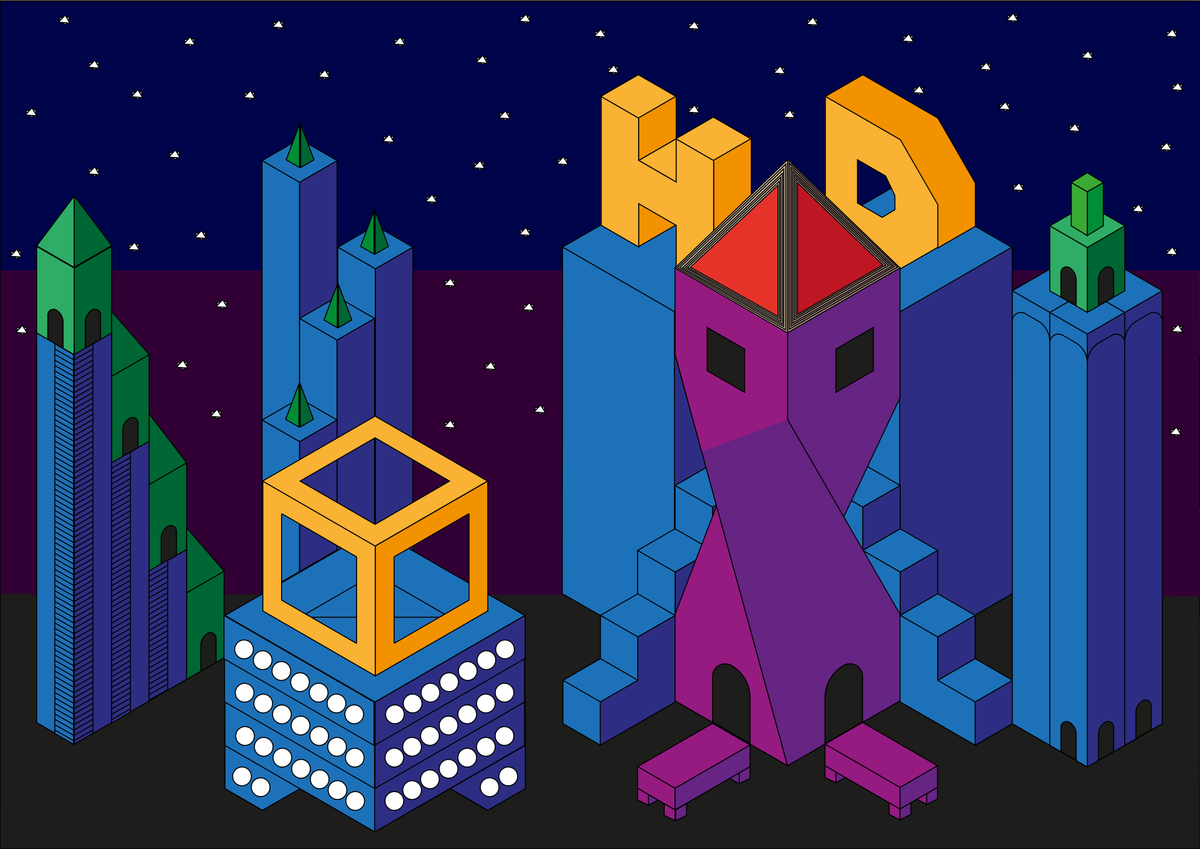Gender & Identity Awareness
Artwork by Riley Caddy, Year 4, Buckley House

Gender & Identity Awareness
Artwork by Riley Caddy, Year 4, Buckley House
By Luke McAlister, Year 10, Plenty Campus
Rights for communities of diversity have rarely before been as contended and, indeed, attacked as they are being today. Masked behind veils of tolerance, we see repeatedly just the extent to which insolence and prejudice have chewed away at the timbers on which humanity’s core values of justice, dignity, and equality stand. These struggles have always been a primary focus in many of our personal moral and ethical consciences. Hence, I would be keen to say that I, the author, being among such people, leapt on an opportunity of this sort, to assist my dear friends in finding comfort within the Ivanhoe community, and express support and solidarity with those whose apparent differences have left them ostracised or wounded.
In an interview that I conducted with Mrs Renata Rowe, the Deputy Head of Plenty Campus, one of the greater school 'poohbahs', and a keen promoter of diversity within the educational environment, she stated, 'Last year I was a member of the School's Inclusion Strategy Team which developed a policy to be launched this year aimed at ensuring that all members of the Ivanhoe community feel welcome and a sense of belonging.'
Indeed, given that gender discrimination victims are courageously lifting the cries of their fellow women, as the fight for equality in sexual orientation or gender identity continues, and in light of the recent Black Lives Matter protests, many of my classmates and camaraderie have added their voices to the rising tide of demands for an egalitarian change. This goes beyond the usual contact group on a mobile phone, some provocative speech delivered on stage at assemblies, or a conga line of identically dressed students at an athletics carnival. Now, students are active participants, making strides in this direction, organised into coteries with clear goals.
It is remarkable and admirable to see our school working alongside students in order to promote this shift. Mrs Rowe said, '...we celebrate special days such as IDAHOBIT day and International Women's Day, we have had student groups such as the Gender Awareness Group, held Wellbeing sessions, and brought in Guest speakers such as Jason Ball to speak about identity.'
These types of acknowledgements, made by administrative figures within the School’s operations and hierarchy, speak volumes to the broad support network that exists within a school as diverse as our own.
Without these sorts of measures, the consequences can be dire. We see time and time again how vulnerable people can be hurt or exploited by threats or torrents of abuse. Presently, 16% of LGBTI+ youth in Australia, aged between sixteen and twenty-four, have attempted suicide, according to the National LGBTI Health Alliance. One in twenty Australians have been victim to physical assault because of their race, according to the Australian Human Rights Commission. One in six Australians have been victim to sexual or physical aggression prior to the age of fifteen, according to the Australian Institute of Health and Wellbeing.
I concede and agree wholeheartedly that identity never should define a person - indeed; it has been a lesson that observation has informed me can be hard to learn. But it is gut-wrenching to be reminded that, as each number clocks over into another, there lies the unsung stories of children, siblings, parents, families, and friends, who have been subjected to ignorance, shame, and guilt. All of us must now hoist their memories to remind us exactly of the importance of respect, and working alongside the disenfranchised to empower them, and to raise their voices for all to hear.
In a promising sign, Mrs Rowe added, 'Earlier this year to focus our attention on minority groups we created two new groups one which is looking at how to better support the LBGTI+ community at our school and one which is looking at issues that have come out of the Black Lives Matter movement. We expect to combine these two groups into a Diversity group and invite students to lead them in the future.' To us, the team of The Ivy Voice and at Ivanhoe Grammar School, even if to no one else, this seems a radiant future.


By Rose Quinn, Year 7, The Ridgeway Campus
Biologically men and women are different, they are always going to be different. But the way women think is not the way men think. It is not something that should be generalised. Every woman is different, they have a different story, hence the way that they think is different. We all know that no one in the world thinks the same as anyone else, yet when it comes to thinking about men and women, it seems to always come down to pink and blue, what is for girls and what is for boys. Gender inequalities exist all over the world, whether they are so small you barely notice them, or so great they impact you, your family and your entire life. They do exist.
Usually, women are on the receiving end of gender inequality and it can be portrayed in many different ways, whether it’s a few comments, lack of opportunities, lack of respect or lack of pay. Every woman is impacted negatively at some point in their lives by the lack of gender equality in their environment. In some countries, it has gone as far as to take away girls’ education. This is something most people take for granted but there are girls in countries like Pakistan and Afghanistan that would be killed for seeking an education.
Another huge issue is the gender pay gap which exists in most countries. In Australia, women are, on average, paid 13.9 % less than men, which although better than a lot of countries, is still far too high. Anything is far too high! There is no reason that any woman should be paid less than a man for doing the exact same job. Excuses are made as to why they should be, but the reasons people give don’t matter. As long as the facts are that both the man and the women are doing the same exact job, it shouldn’t matter.
Sexism exists. Gender equality can’t be achieved until everyone helps achieve it. It will always be an issue if it isn’t acknowledged, and for the sake of women across the world, it needs to be stopped!


By Samantha Garbutt, Year 6, Buckley House
Every individual yearns for equal rights, opportunity and status. However, discrimination in society exists due to culture, geographical differences and gender. Gender inequality is a concern that is prevalent throughout the whole world. Gender equality means that women and men receive equal economic, education, political and health opportunities.
Gender inequality has traditionally constricted women and girls to the domestic sphere. However, there has unquestionably been progress in empowering women and girls; more girls are receiving an education, laws have been reformed and more women are working in roles that were traditionally filled by men. In 1984, the Federal Parliament passed the Sex Discrimination Act ensuring women can access employment, services and accommodation. Despite these achievements, gender inequality is still seen in the workforce through practices, processes and the overall structure of organisations. The workforce is sometimes referred to as an inhospitable place for women as there are many forms of gender inequality. One is the pay gap. Most workplaces operate with a system where, if you are paid more, you are more valuable. So, not only are women paid less, but they are classified as less important. According to the Workplace of Gender Equality Agency, in February 2020, Australia’s full-time gender pay gap was 13.9%, resulting in women earning on average $242.90 per week less than men.
Along with a pay gap, women are subjected to stereotyped comments concerning how women should act and engage in the workforce.
This gender disparity is an impediment in the growth rate of our country. As the participation of women in the workforce increases, so does the economic growth rate. Therefore, gender equality increases the wellbeing of the nation and economic prosperity.
In conclusion, guaranteeing women access to equal rights is essential to attaining Global Goal #5 - Gender Equality. Women and girls are instrumental in building a productive and healthy family, community, country and a world that is beneficial for everyone.